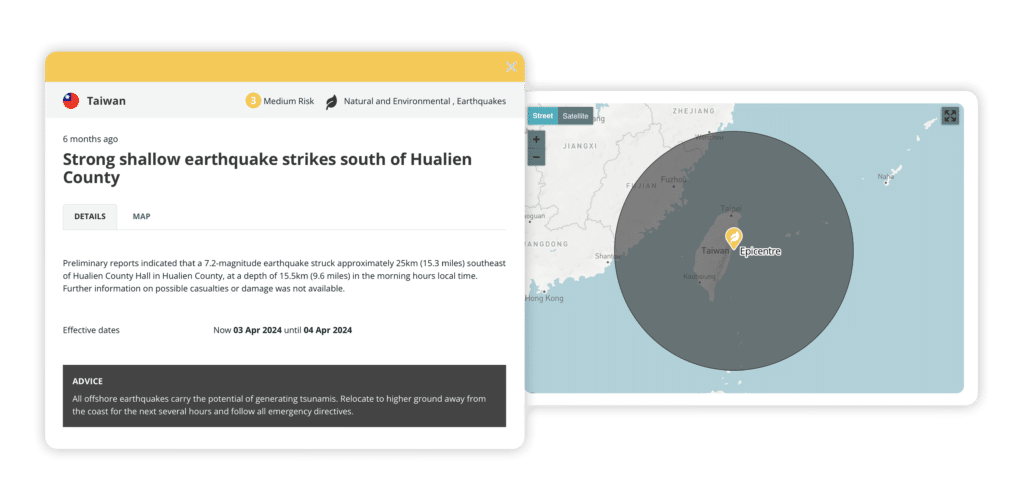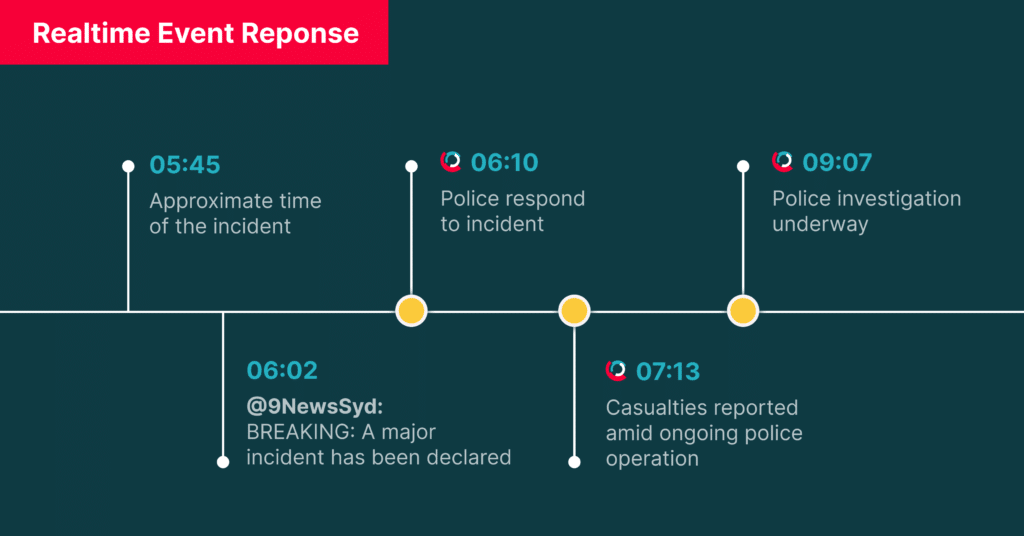At Riskline, our analysts work diligently to provide accurate, timely alerts through a thorough process. They gather data from a wide range of sources, including Open-Source Intelligence (OSINT) such as news agencies, government reports and social media, complemented by local correspondents and networks for on-the-ground insights. Our in-house tool helps filter out irrelevant information, allowing analysts to focus on what matters.
Every alert is carefully reviewed: analysts cross-check details with multiple sources and write clear, precise reports. Then, another analyst assesses the information to ensure accuracy before it reaches our clients. By working around the clock, we keep travellers informed about global events and potential disruptions with unmatched precision and reliability.
Methodology
To make this happen, we employ a systematic method to evaluate and communicate risk. We use an approach that aligns with global risk management standards. It categorises risks into five levels: Low, Moderate, Medium, High and Extreme. This classification reflects the actual or potential impact of the threat or hazard we are reporting. It also considers the likelihood of that threat or hazard occurring, if it has not already.
Our analysts will first assess the impact of an event. A threat with “catastrophic” potential, like a powerful hurricane, would be categorised as a Moderate Risk. This is if it’s “unlikely” to affect a specific area or if its impact is expected to be minimal in that timeframe. This ensures our risk assessments are balanced. We must consider both the impact and the event’s likelihood.
For planned events, we will assess the potential impact. Analysts will consider the impact on travel (mobility) and people’s safety. They will, to a lesser extent, also look at damage to infrastructure and assets. In the case of an incident or event that has already taken place, the likelihood of the event is “certain.”
Riskline Alerts

There are two types of alerts.
- Predictive “Notices” warn of upcoming events that could affect travel or operations.
- Reactive alerts analyse incidents that have already occurred.
Although both types appear identical in format, their content differs. While proactive Notices are ideal, many travel security incidents cannot be anticipated and the concise format of an Alert allows analysts to quickly report an incident.
What does an alert consist of?
The alert format features a headline and a short report that concisely explains all the necessary information about the incident.
Alerts are classified into seven categories: Political Developments, Conflict and Terrorism, Demonstration and Unrest, Crime and Corruption, Natural and Environmental, Health and Medical, and Travel Safety and Disruptions. Some of these categories include specific subcategories, such as Earthquakes, Wildfires and Heatwaves under Natural and Environmental.
Riskline also uses geolocation as part of its alert system. Geolocation allows us to pinpoint the exact location of incidents and assess their impact on specific areas. This data generates detailed maps in alerts. They show the affected regions with precision. Geolocation helps provide accurate, location-specific advice to travellers and organisations. This improves their response to potential risks.
Every Riskline alert will also have an Advice Line. It provides guidance on how to respond to the incident described in the alert.
How do we respond to incidents and disruptions
Breaking incidents are real-time events that pose immediate threats to travellers’ safety or cause widespread disruptions. These include attacks, whether criminal or terror-related, an earthquake and/or tsunami or large volcanic eruption, major political upheavals and declaration of war, among others. Immediate alerts are crucial so that travellers and security managers can take quick action to minimise risks.
For breaking incidents, Riskline analysts will publish the first alert as quickly as possible. They use one trusted media source or multiple similar social media reports and the alert gets reviewed by another analyst, to ensure accuracy while maintaining speed.
The second and all subsequent alerts, called updates, will then clarify details about the incident and its impact as they emerge. These updates may adjust the Risk Level, Category, Location and even the Advice Line as analysts refine them based on new information about the incident.
As part of our goal to be highly efficient and accurate, analysts continuously track our response effectiveness, sources and procedures, always making sure to deliver high-quality information to our clients.
Here are several examples of incident response timelines that Riskline has covered:
Moscow Concert Attack on 22 March 2024
Mass Stabbing Incident in Sydney on 13 April 2024
Mass Shooting at University of Nevada, Las Vegas on 6 December 2023
Unrest in New Caledonia on February-May 2024
Major Earthquakes and Tsunami Warnings in Taiwan on 2-3 April 2024
Navigate global events with confidence and precision
Staying informed about global events helps ensure traveller safety and make good decisions. Riskline’s expertise in providing, accurate, timely and human verified intelligence, empowers travellers keeping them informed and prepared. Reach out to evaluate how real-time information can help your travellers navigate global events with confidence and security.
